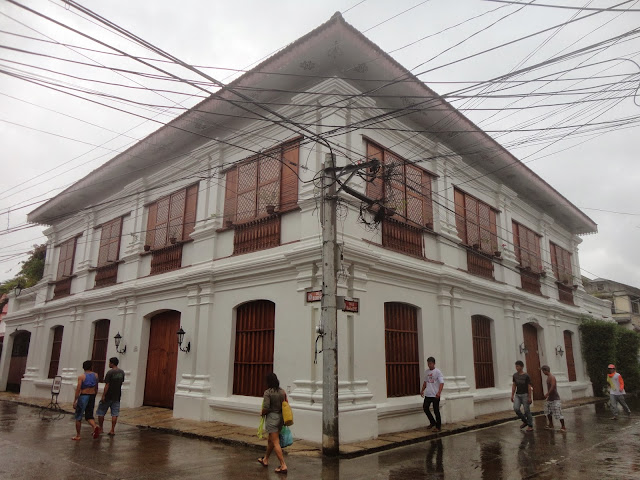There are three good examples of such old houses in the vicinity of Nampicuan.
One is (I should say was) the house of Dona Marta Martinez near the defunct railroad in Nampicuan. Like the railway tracks that have long since ceased operations and have been stolen for its weight in steel, the home of Dona Marta is a long lost memory from several of my visits in my youth. Each time I visited over the years, the house crumbled one portion at a time until it was gone--yet I cannot forget the grand staircase that led to what appeared to be a vast living room with a ceiling designed to accommodate opulent chandeliers. I was told that my Lola Caridad used to play majhong in this house with Dona Marta, among other landlords in the area.
Another is the house built by my Lolo Ramon, the brother of my Lola Caridad, in Barangay Ambassador Alzate, Nampicuan. Recently, my Tita Carmencita Ongsiaco Reyes (daughter of Lolo Ramon and currently the incumbent Governor of the Province of Marinduque) explained to me that when the Ongsiaco siblings of her father's generation divided the hacienda of their father (Lucio Ongsiaco), the portion in which the house was built went to Lola Meling (sister of Lolo Ramon and Lola Caridad), who married Alzate. It was inherited by my late Tito Tony Alzate, who donated the same to the Roman Catholic Church. The house still stands today and, upon close scrutiny, reveals bespoked and riveted (welding was not readily available at that time) wrought iron grills depicting local scenes.
 |
| The old Morales house along MacArthur Highway, Moncada, Tarlac |
The last but not the least is the Morales house in Moncada, Tarlac, which brings me to Armand's delightful bistro--a simple affair that serves delicious meals prepared by Armand himself, whose local dishes are borne out of his father's tradition of delicious home cooking and his not-so-secret source of blue marlin from Zamboanga. Apart from a variety of traditional Filipino breakfast viands like tapa, longanisa, danggit and pusit, Armand serves a number of local mutton dishes, including kilawin, pinapaitan, adobado, sinampalukan, kaldereta and, by special order, the best rogan josh this side of town. Yes, Armand prepares a hearty bulalo, sisig that would make your heart stop, flavorful pancit and truly crispy dinakdakan but you will be impressed by his blue marlin renditions, including blue marlin curry, blue marlin in black bean sauce, blue marlin sinigang and, my slice of heaven, blue marlin kilawin--the best I've had hands down.
 |
| Armand's vintage VW Beetle in front of his resto |
 |
| Blue Marlin Kilawin--My Slice of Heaven |
Armand is about to complete his griller. So, watch out for some serious delectable barbecues with Armand's special touch of flavoring. All this good food is complemented by Armand's easygoing old-school hospitality that makes you feel at home at the old Morales house in Moncada, Tarlac.





















































































